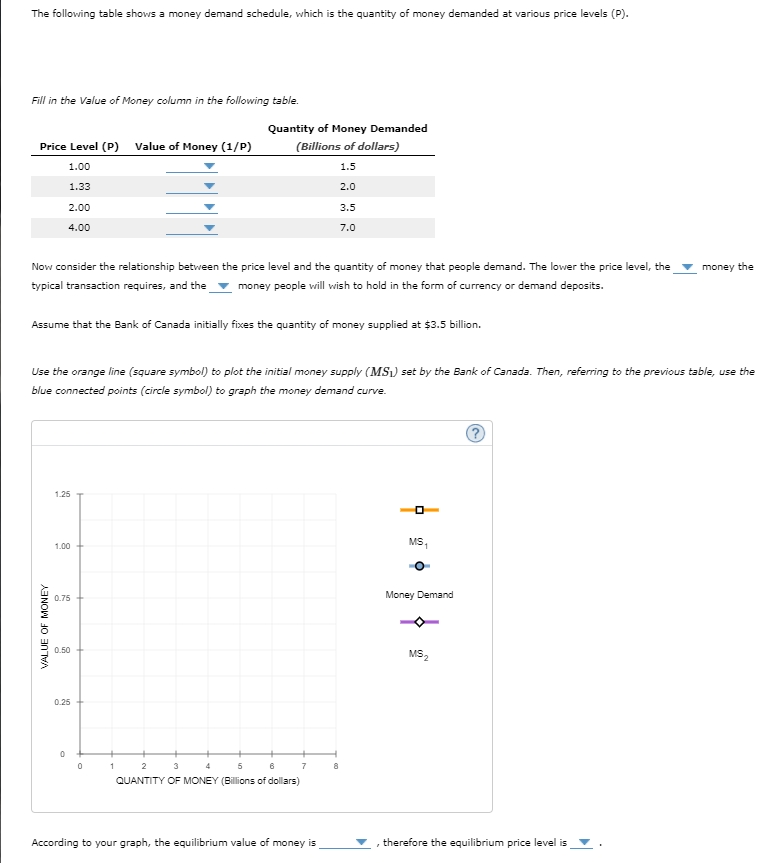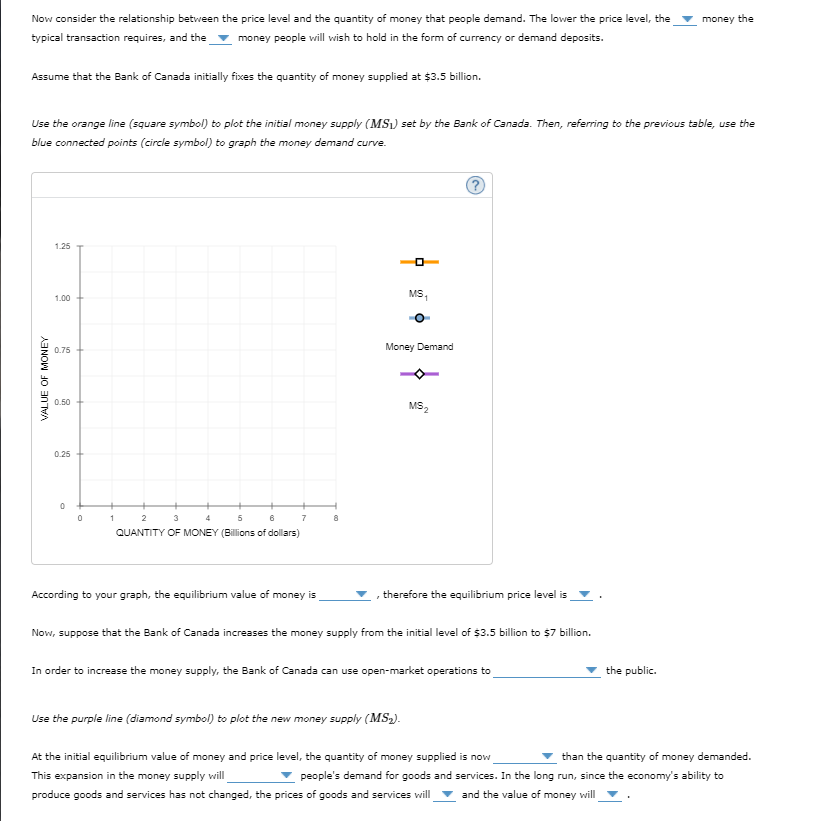following table shows a money demand schedule, which is the quantity of money demanded at various price levels (P). n the Value of Money column in the following table. Quantity of Money Demanded ice Level (P) Value of Money (1/P) (Billions of dollars) 1.00 1.5 1.33 2.0 2.00 3.5 4.00 7.0 consider the relationship between the price level and the quantity of money that people demand. The lower the price level, the money the cal transaction requires, and the money people vill wish to hold in the form of currency or demand deposits. me that the Bank of Canada initially fixes the quantity of money supplied at $3.5 billion. the orange line (square symbol) to plot the initial money supply (MS) set by the Bank of Canada. Then, referring to the previous table, use the connected points (circle symbol) to graph the money demand curve. 1.25 1.00 MS, 0.75 Money Demand 0.50 MS2 0.25 1 2 3 QUANTITY OF MONEY (Billions of dollars) 4 7 8 rding to your graph, the equilibrium value of money is , therefore the equilibrium price level is
The following table shows a money
NOTE:
Options for "Value of Money column" chart are as follows
-->for price level 1.00 options for value of money are (0.50, 1.00, 2.00)
-->for price level 1.33 options for value of money are (0.67, 0.75, 1.33, 2.66)
-->for price level 2.00 options for value of money are (0.50, 1.00, 2.00, 4.00)
-->for price level 4.00 options for value of money are (0.25, 2.00, 4.00, 8.00)
NOTE:
The lower the price level, the ______ (more or less) money the typical transaction requires, and the ______ (more or less) money people will wish to hold in the form of currency or demand deposits.
NOTE:
Create the graph as stated in problem
NOTE:
According to your graph, the equilibrium value of money is ______ (0.25 or 0.50 or 0.75 or 1.00), therefore the
NOTE:
In order to increase the money supply, the Bank of Canada can use open-market operations to _______ ("sell bonds to" or "buy bonds from") the public.
NOTE:
At the initial equilibrium value of money and price level, the quantity of money supplied is now _______ (greater or less) than the quantity of money demanded. This expansion in the money supply will ________ (increase or reduce) people's demand for goods and services. In the long run, since the economy's ability to produce goods and services has not changed, the prices of goods and services will _______ (rise or fall) and the value of money will _________ (rise or fall)


Trending now
This is a popular solution!
Step by step
Solved in 3 steps with 1 images




